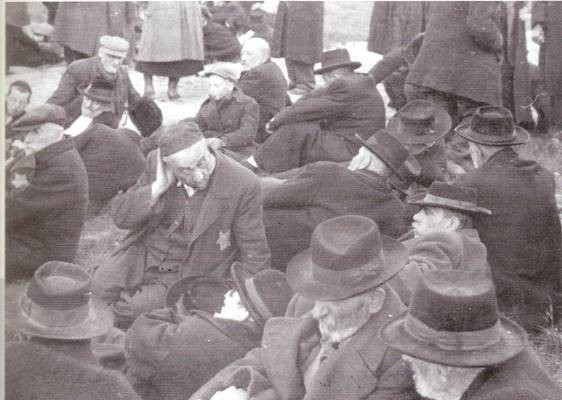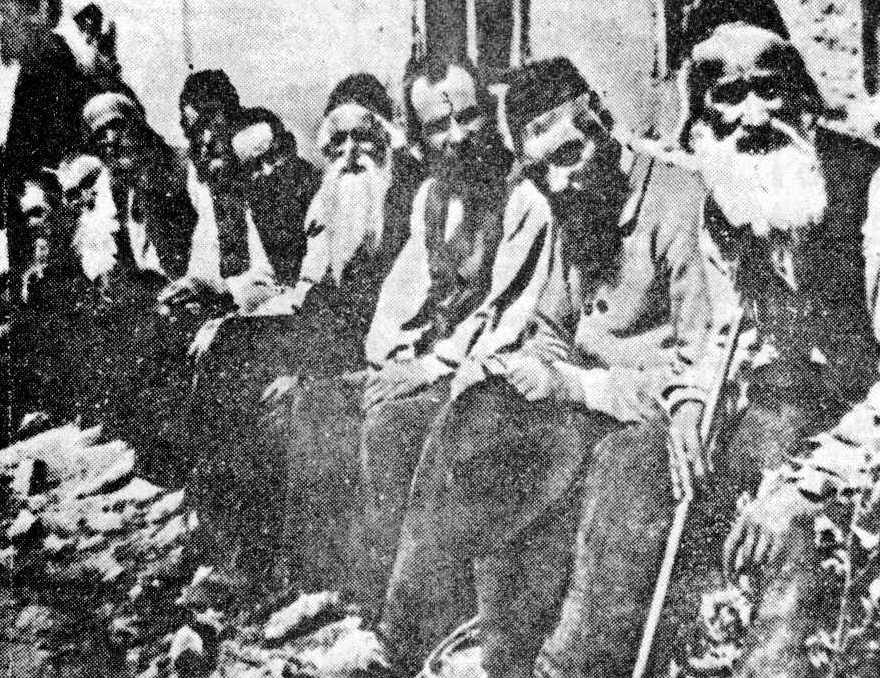The Jews of Maramures – 80 Years Since they were Sacrificed
By: Yaakov Rosenfeld, Ganzach Kiddush Hashem
The map of the Carpathians is dotted with many communities whose names are not known today, even though for hundreds of years this flourishing region was home to hundreds of thousands of Jews, pious, chasidic, and mitzvah observant.
Opinions differ on the date of the beginning of Jewish settlement in this area. Among Jews from Maramures, the accepted opinion is that the Carpathian Jews were refugees from Poland, Galicia, and Hungary, who escaped the massacres of of Bogdan Chmielnitzky in the years 5408-5409 (1548-1650).
The district of Maramures, which is a section of the Carpathian mountains surrounding Poland, Czechoslovakia, Hungary, and Romania, lies in the north-east of Hungary (within the borders the pre WWI borders) and is mostly mountainous, with the exception of the narrow mountainous plain 5 kilometres wide in the valley of the Tisa River near the town of Tetsch – the most fertile area in the region.

Carpathian Jews waiting before the crematoriums (From the Auschwitz Album)
The mountainous Maramures is surrounded by forests planted with oak and beech trees, from which most of the residents of the area made a living – in the wood industry.
From the towering mountains of Maramures, huge streams of water flow into the valley of Tisza, from where the river flows north and crosses Maramures, while receiving many tributaries, such as the Vishvi and the Hiza from the south, and the Tratz, Talbor, Nagad and others from the north.
Between the Maramures mountains are mineral springs and nearby are beautiful and eye-catching healing sites.
In the forests of the Carpathians, the Baal Shem Tov (the founder of Chasidism) secluded himself before his revelation, and in fact that area was the breeding ground of both the Baal Shem Tov himself and his holy way, of which most of the inhabitants of Maramures were followers in heart and soul until the they were cut down.
The Maramures district includes cities and towns with distinctly chasidic orientations. The names Sighet, Rachov, Spinka, Kretshnif, Bitschov, “Sdeh Lavan” (Bila Tserkva), Chust, Bushtina, Wilchowitz and Wishava (distinctly Vizhnitz towns) and many more, are well known.
In 5690 (1930), after the defeat of the Austro-Hungarian empire that ruled Maramures, the area was divided between Romania and Czechoslovakia. In that year, 34,000 Jews lived in the Romanian Maramures, while 74,717 Jews lived in the Czech one.
The surnames that were common in Maramures almost two hundred years ago (according to the census of 1830) are remarkably identical to the surnames of the Holocaust survivors and their descendants, emigrants from Maramures, followers of the Vizhnitz Chasidism and their branches, as well as Satmar, Spinka and more: Adler, Unger, Appel, Basch, Ganz- Gantz, Gottlieb, Daskel, Deblinger, Hess, Hoss, Hecht, Herstik, Wieder, Wiesel, Wertzberger, Zoldan, Tessler, Kahane, Laks, Lerner, Malik, Marmor, Fogel, Fuks, Feig, Fixler, Feder, Perel, Fruchter, Friesler, Kahn, Kasirer, Kind, Razmivesz, Steinmetz, Schechter, Stern.
This is a partial list, a rather sad and gloomy list, since many of the families that we did not list were exterminated in the Holocaust, some of them in 5701 (1941), when they were brutally expelled from their homes and murdered in the towns. In that shocking murder spree, the Romanian gentiles, the residents of Maramures, displayed their hatred and lust for murder.
In Av 5700 (August 1940), After the Second Vienna Arbitration, the northern part of Transylvania, which also included Maramures, was cut off from Romania and given to Hungary.
The Jewish elders, who always missed the beautiful times of the Austro-Hungarian rule, expected their living conditions to improve, as the antisemitic Romanian government made Jewish life miserable in every possible area, but disappointment quickly replaced the feelings of nostalgia.
Unbearably severe economic sanctions were imposed on the Jews, to which were added deportation orders to detention camps on charges of minor economic offenses, or for baseless offenses such as espionage or being a communist. Arrest orders were carried out without in-depth investigations.
But all of this was nothing compared to what happened in the summer of 5701 (June 27, 1941). At that time, Hungary joined the war with the Soviet Union, and Hungarian Jews were instructed to prove their continuous citizenship in Hungary for ninety years prior. Although most Hungarian Jews managed to obtain a certificate in the office in Budapest, many residents of Maramures did not obtain such a certificate for various reasons and thousands of them were deported to death in Kamenets Podolsk (the last stop of some of the deportees) or in Stanislaus.
The path of suffering and death was stopped after the intervention of the Hungarian Minister of the Interior, and thanks to him, seven trains loaded with Jews returned to the border.
An estimated 18,000 of Maramures’s Jews were deported to their deaths by the notorious Hungarian gendarmes, until the month of Av 5701 (July-August 1941).
During the following years, the Jews of Maramures showed their kindness, when they opened the doors of their home to Hungarian Jews, many of whom assimilated, did not speak Yiddish, and were not familiar at all with the Judaism practiced in Maramures, and certainly not with its customs.
Near the village of Bogdau, amidst a breathtaking landscape, hundreds of Jews were employed in difficult labour (building fortifications), while near Bishtina and Slapina, thousands of Jews were employed in the labour companies building military airfields.
The Jews of Budapest, some of whom, as mentioned, were assimilated and knew nothing about Judaism, were surprised to learn about this Judaism that they did not know about… The Jews of Maramures hosted them and gave them everything they needed. The Jewish wives and their daughters cooked the best food for them, and gave them the best rooms in their homes.
The Jews of Maramures treated their guests with love, cheerfulness, and a willing heart. This brought people closer together, and as the survivors said: “Those far away became close.”
The polarization in worldview and lifestyles did not prevent the Jews of Maramures from accepting the heartbroken, the Budapest deportees, who suddenly realized that their Jewish fate would not leave them even after generations of assimilation.
They gave their guests food and drink far beyond their meager abilities, and on days off, when the wives of the work crews came to visit, they stayed in the homes of Maramures Jews who offered them warm beds.
The simple Maramures Jews were good-hearted. Most of them were poor and without means, but they were always happy with their lot and gave some from their mouths to the poor. They were G-d-fearing and Torah-loving, and for the destruction of this wonderful Judaism, among the other communities of Europe, holy and pure Jews, who shone like the brightness of the sky, there is no consolation.
On the 24th of Adar 5704 (March 19, 1944), the German tanks penetrated Hungary, and very quickly, within six weeks, sixty thousand Jews were deported to the ghettos.

Jews of Maramures before their murder
The bitter end of the Jews of Maramures took place in the months of Iyar and Sivan 5704 (spring 1944), exactly eighty years ago, and in the following article we will tell a little about the communities of the Jews of Maramures, about their character, and the aura of mystery in the forests of Maramures where the Baal Shem Tov lived and worked; in the following article we will G-d willing tell about the holiness and heroism of the Jews of Maramures on their last journey – to Auschwitz.
And in the fourth article, we will tell, G-d willing, about the survivors from Maramures after the Holocaust; about the reconstruction efforts and about the wonderful communities that rose from the ashes in the Land of Israel and in the United States.
Sources: “Maramures,” Shefer Eretz Kedem, community books












